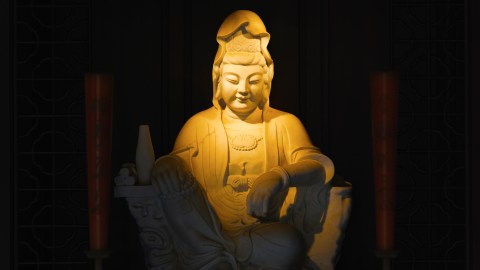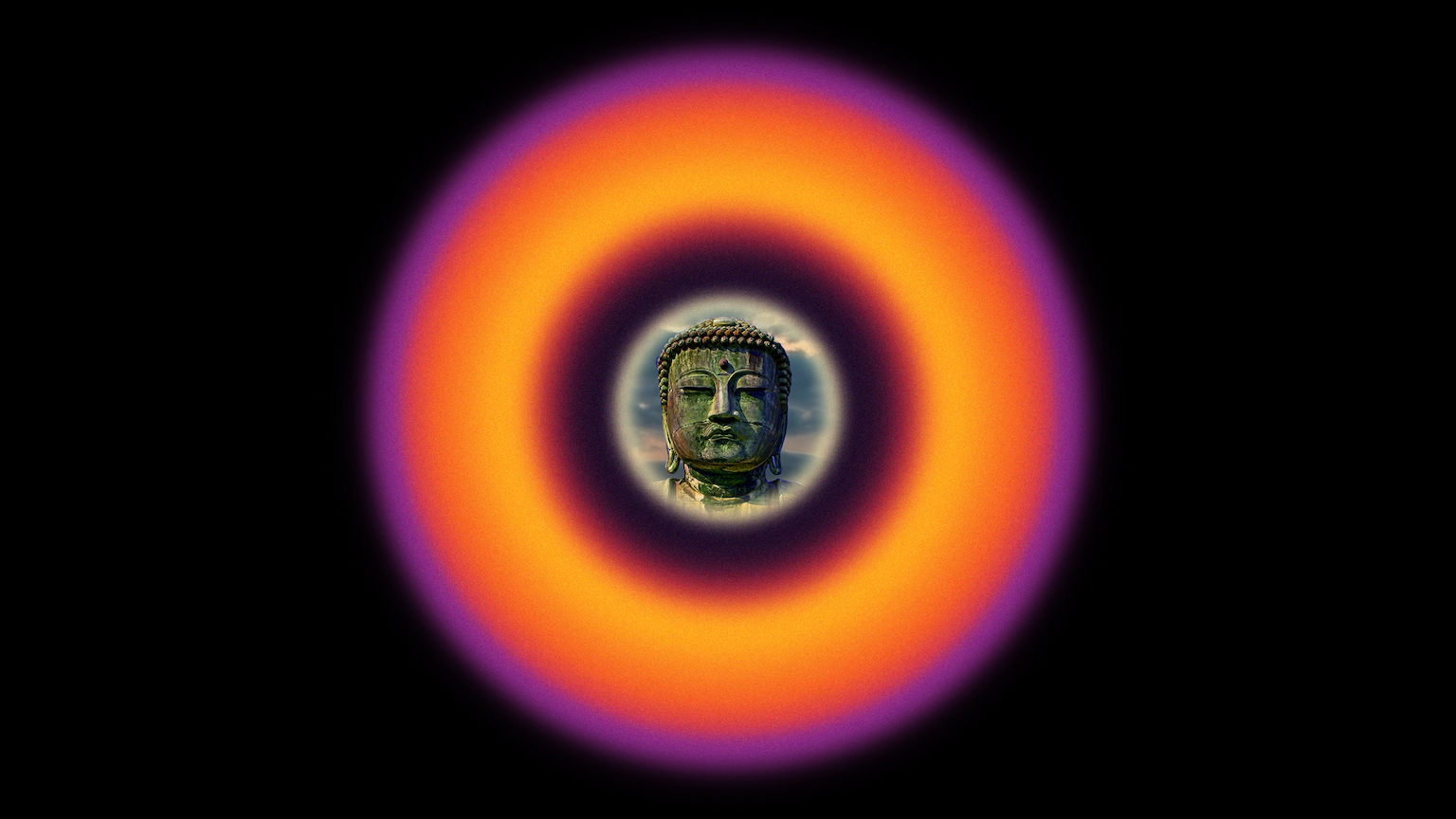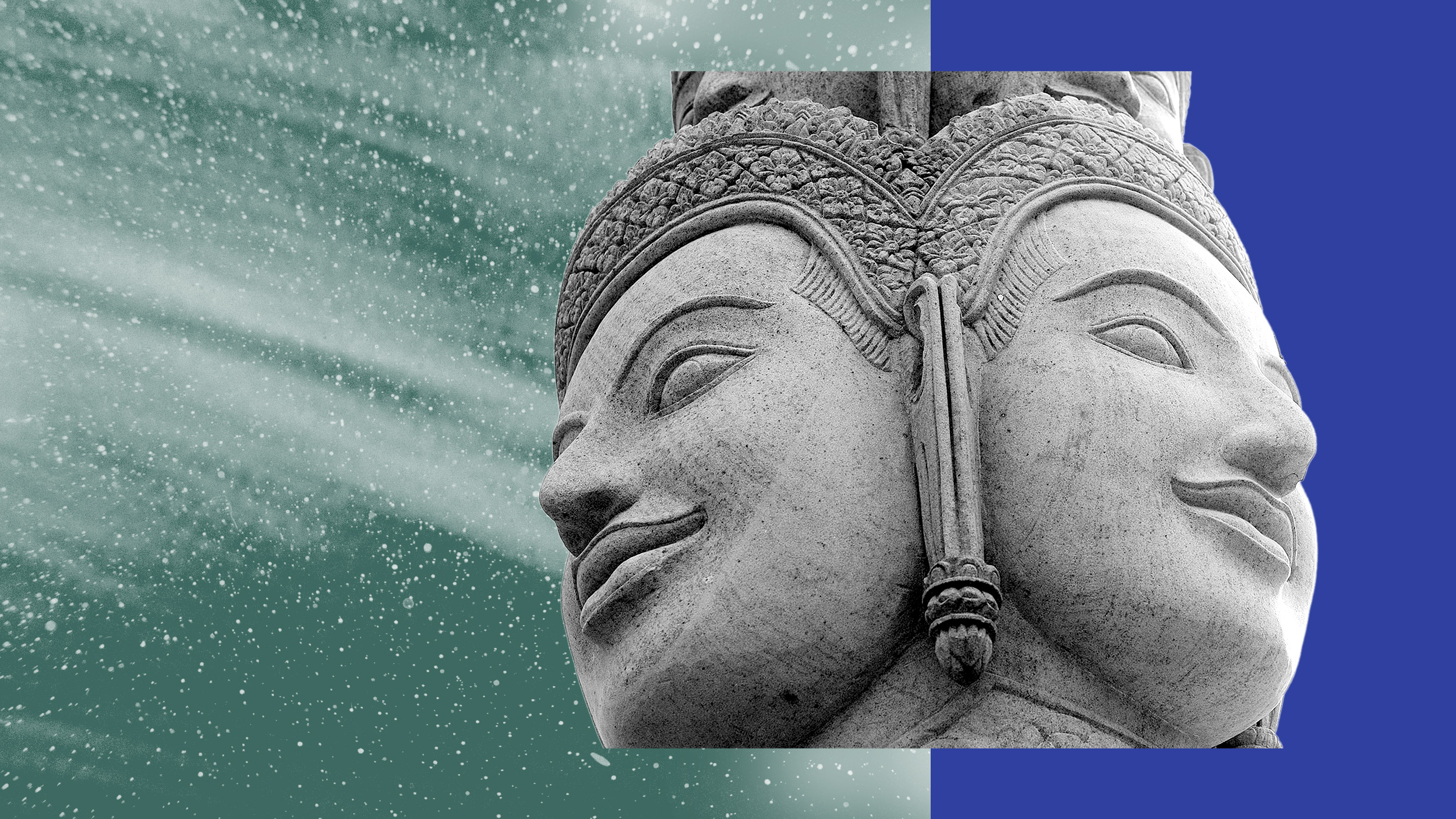Is Buddhism a religion?

- The conflict between science and religion is an old story. But in all the battles pitting science against religion, Buddhism mostly gets a pass.
- In every place it went, Buddhism functioned exactly as you would think a religion should function. So how did we in the West get a view of Buddhism as being so scientific?
- It is a mistake to miss Buddhism’s long history as a religion and think it should be stripped down to something purely secular.
The conflict between science and religion is an old story. It goes all the way back to Galileo, who faced the Inquisition for his heretical view that the Earth went around the Sun, and not the other way round. In its modern incarnation, the conflict tilts around Christian Fundamentalism and its views on evolution. (It is noteworthy that the Catholic Church has no problem with Darwinian evolution.)
In all the battles pitting science against religion, Buddhism mostly gets a pass. In fact, Buddhism is often presented as being in tune with scientific findings in disciplines such as quantum physics or neuroscience. Buddhism’s purported scientific approach has even led some to claim that it is not really a religion and should instead be seen as a method of empirical investigation. So today we will ask two questions. First, is Buddhism a religion? Second, what is Buddhism’s relationship to science?
Functional religion
The answer to the first question is yes — Buddhism is certainly a religion. I know this because I have been a practicing theoretical astrophysicist for 30 years, and I have been a practicing Zen Buddhist for just as long. From that vantage point, I have gotten to know the practices and history of Buddhism pretty well, and it is most definitely a religion.
Let’s start with a big overview. Buddhism began about 2,500 years ago when an Indian prince named Siddhartha Gautama started to teach what became known as the Dharma (“the Law” or “the Way”) embodied in his four noble truths. Note also that Buddhism was never called Buddhism by Buddhists. Western visitors invented that term. The core idea of the four noble truths is that we suffer because we fail to see that life is ceaseless change. Instead, we spend our time in endless rounds of attraction and aversion, thinking it will somehow lead to satisfaction. In the two and half millennia separating then from now, this Dharma spread across India, south to Sri Lanka, north to Tibet, and then east to China, Korea, and Japan.
Now comes the important point. In each of these cultures, Buddhism functioned exactly as you would think a religion should function. There were rituals, prayers, doctrines, battles over doctrines, rigid hierarchies, oppressive patriarchies, and politics — lots and lots of politics. There were also many beliefs that modern, scientifically oriented folks would definitely not sign up for — things like reincarnation, rainbow bodies, and miraculous healings.
Buddhism changed as it grew
If all this is true, how did we in the West get a view of Buddhism as being so scientific? Well, part of it is good PR. When practitioners of the Dharma encountered folks from the West, they purposely emphasized those aspects of their practice that fit a scientific outlook. It was a way of showing how advanced their spirituality was compared to the Abrahamic traditions that were based on some “old man in the sky.” Just as important, from the 1950s onward, Buddhist teachers from Asia who came to the West placed a strong emphasis on contemplative practice (meditation) as the heart of the Dharma. Rituals, especially those that involved supernatural elements, were downplayed. Those parts of Buddhism, therefore, did not take root in the United States, Europe, or the West in general.
All of this means that the version of Buddhism most of us are familiar with is something relatively new compared to the forms that evolved in India and Asia. The “scientific Buddha” and the idea of Buddhist exceptionalism with regard to science are modern creations. Is this a problem? Does it mean that the Dharma taking hold here is a corrupted or lesser version than what came before, including its relationship with science?
I do not think so at all.
Over the last 2,500 years, as Buddhism marched eastward, it was always changed by the new cultures it encountered, just as it changed and transformed those cultures. When Buddhism reached China, for example, it became strongly colored with aspects of Taoism. Thus it gave birth to Chan, or Zen as it became known in Japan. Now that it is finding a place in the West, Buddhism is being changed by its encounter with our dominant worldview, which is science. This is just the way of things. No aspect of human culture that is unable to adapt and change is likely to endure very long. The way particular aspects of a tradition get de-emphasized while others get elevated is a part of this process. Thus, if Western Buddhists don’t want to spend a lot of time thinking about reincarnation (which I do not), but do want to spend a lot of time focusing on contemplative practice and compassion (which I do), that is a part of Dharma’s evolution here.
The trick in all this — and it’s hard — is to allow Buddhism to change as it encounters the West without taking away the potency that has allowed it to endure for so long. Buddhism like all religions has always been salvific — it is about salvation. One difference between it and the Abrahamic religions of the West is that it can be seen as offering salvation without recourse to a theistic God. It is literally atheistic (though traditional Buddhism has lots of deities, like kwan-yin, who represent personalized aspects of the Dharma). The possibility of a direct realization of the means to salvation is a powerful aspect of Buddhism’s approach. While contemplative practice was something generally reserved for monastics in traditional Buddhism, it was still always part of the Dharma. That part has now been made central in the West. But this centrality has also given rise to the dangers of “McMindfulness,” which strips Buddhism’s concern for ethical practice and replaces it with a self-centered version of spiritual endeavor.
The bottom line is that it is a mistake to miss Buddhism’s long history as a religion and think it should be stripped down to something purely secular. To do so ignores much of the reason why the Dharma still exists millennia after its conception. At the same time, demanding that Buddhism remain static, retaining exactly the forms it held of old, in other countries, would be to deny it the creative power and evolutionary potential which allowed it to survive for so long.
It is here that the relation with science is so important. If Buddhism is open to dialogue with scientific practice, that is awesome. If its insights into “being a subject” are useful for neuroscience, let’s have at it. If its long tradition of highly refined philosophical debate about the nature of experience, mind, and phenomena has something useful to add to discussions at the bleeding edge of philosophy and science, that is better still. These are all excellent possibilities, and the fact that Buddhist leaders like the Dalai Lama are so interested in science just amplifies the potential.
These developments in Buddhism’s encounter with the West are all exciting, provocative, and hopeful. We cannot forget, however, that Buddhism was always intended to offer a path of spiritual and ethical development — a way forward, a way in, and a way beyond.





